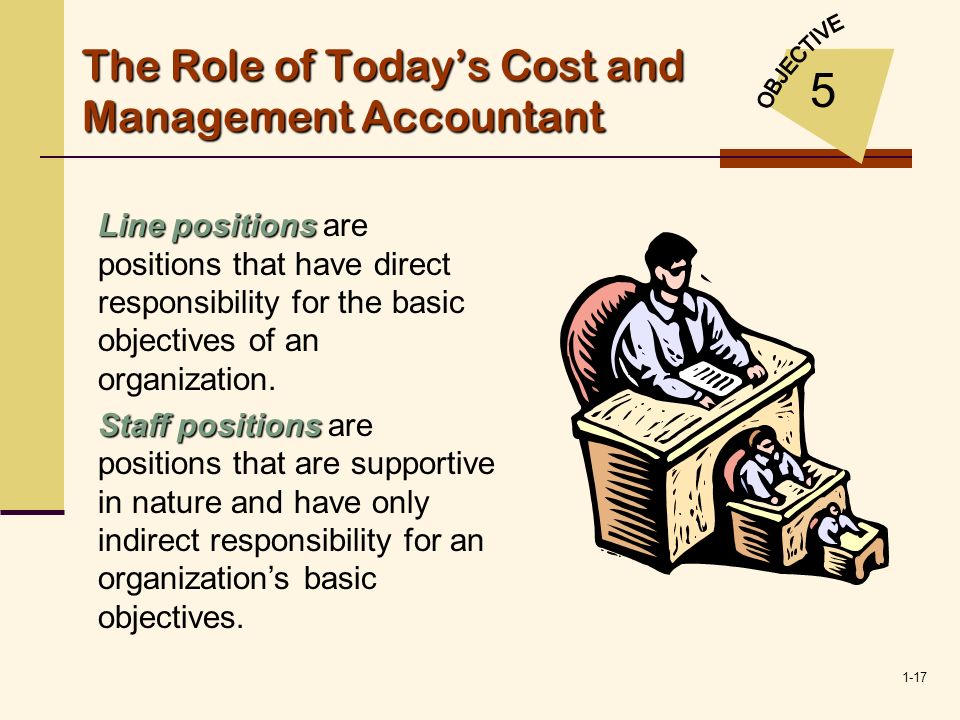Contents
A better measure of the alpha produced by the manager is the Geometric Information Ratio. The Sharpe ratio is useful for an attribution of the absolute returns of a portfolio, and the information ratio is useful for an attribution of the relative returns of a portfolio. To evaluate the market of the borrower, the bank will have to evaluate its demand and supply. This is because it indicates that the company will enjoy good sales and hence, can repay the loan efficiently. To assess technical aspects of a company, the bank will have to evaluate the nature of the business and the industry or sector of the borrower. The lender will have to observe the company’s raw materials, capital, labour, transportation, selling plans, etc.
It is easier to understand the alpha by looking at what it actually represents. Information ratio measures the excess returns of an investment portfolio in regards to a benchmark’s gains, and how it’s sustaining over time. Tracking error, on the other hand, is the standard deviation of such an investment portfolio’s excess returns with respect to the benchmark. Whether one applies individually or as a corporate entity, a lender always conducts a detailed and systematic credit appraisal process.

One of these metrics is the information ratio or IR, which is useful for both investors and market professionals. Another point worth raising is the complications that can arise when comparing multiple funds against a benchmark. Each fund might have different securities, asset allocations for each sector, and entry points in their investments, making such assessments difficult to interpret. Methodis one of “appraisal” to calculate appraisal ratio, “modified” to calculate modified Jensen’s alpha or “alternative” to calculate alternative Jensen’s alpha. There is no absolute correct answer to a financial statements interpretation question. What sets a good answer apart from a poor one is the discussion of possible reasons for why changes in the ratios may have occurred and arriving at an appropriate conclusion.
For example, comparing the return on assets between companies helps an analyst or investor to determine which company is making the most efficient use of its assets. The applicable benchmark index for the fund has e-book annual return of 11%. Further, the beta of the mutual fund vis-à-vis that benchmark index is 1.3while the chance-free rate of return is 4%.
Understanding the Appraisal Ratio
A lender will have certain norms, rules, and standards to assess the creditworthiness of a particular loan applicant. If a borrower has high creditworthiness, there is a high probability that his or her loan application will be accepted by the bank. The need for an appraisal ratio is due to the limitations of simply looking at the raw figures of a fund manager’s investments. Somebody who achieves a very high return may have simply taken a risk and been lucky and the same fund manager may just as likely crash and burn in the future. While past performance is no guarantee of future results, savvy investors will want to get a better idea of how skillful a fund manager has been in the past.

For example, an increasing debt-to-asset ratio may indicate that a company is overburdened with debt and may eventually be facing default risk. The Sharpe ratio punishes the funding for good threat, which provides positive returns for investors. However, determining which ratio to make use of depends on whether the investor wants to concentrate on total or normal deviation, or just downside deviation. Of course, the basic job of a fund manager is to remove the unsystematic threat within the portfolio by diversifying and hence solely systematic risk must be relevant.
Factors Evaluated During a Credit Appraisal Process
For instance, a simple technique of selling deepout-of-the-moneyoptions tends to collect small premiums and pay out nothing till the “big one” hits. If a model is used to predict monitoring error, it’s known as ‘ex ante’ tracking error. Ex-publish tracking error is extra useful for reporting efficiency, whereas ex-ante monitoring error is generally utilized by portfolio managers to regulate risk. Various kinds of ex-ante tracking error fashions exist, from simple fairness models which use beta as a main determinant to extra complicated multi-factor mounted earnings models. The latter way to compute the tracking error enhances the formulation under but outcomes can range .
When assessing both the current and the quick ratios, look at the information provided within the question to consider whether the company is overdrawn at the year-end. The overdraft is an additional factor indicating potential liquidity problems and this form of finance is appraisal ratio both expensive and risky . Interpreting financial statements requires analysis and appraisal of the performance and position of an entity. Candidates require good interpretation skills and a good understanding of what the information means in the context of a question.
An Information Ratio example would better illustrate this process of IR calculation. To determine the annualised Information ratio, one needs to multiply IR by the square root of 252. Risk takes on many forms but is broadly categorized as the chance an outcome or investment’s actual return will differ from the expected outcome or return.

It appears that the Freedom Manor ratios are a bit lower than the other four regions. Alpha also can refer to the abnormal rate of return on asecurityor portfolio in extra of what can be predicted by anequilibriummodel like CAPM. In this instance, a CAPM mannequin would possibly goal to estimate returns for buyers at varied points along an environment friendly frontier. Moneyland.ch is Switzerland’s independent online comparison service covering banking, insurance and telecom. More than 100 unbiased comparison tools and calculators are available on moneyland.ch, along with useful financial guides and timely news. Investors can, therefore, choose fund manager B, owing to the consistency of their performance.
Appraisal Ratio – Explained
Like the opposite threat/return metrics we have mentioned so far, Treynor makes an attempt to measure how nicely an investment has compensated its traders given its degree of risk. The Treynor ratio depends on beta, which measures an funding’s sensitivity to market actions, to gauge risk. To calculate the appraisal ratio, the fund’s alpha is divided by the unsystematic risk of the funds in which they invested. Its technical definition is the intercept of the security characteristic line, that line being a graph comparison of an asset’s risk to the relevant market’s risk.
- While the alpha is the amount of return an investment earns that surpasses the benchmark, the residual standard deviation measures the relative risk of the investment.
- On the Horizontal Equity tab, we will check the boxes for a couple of plots, as well as for the horizontal equity tests.
- A lender will have certain norms, rules, and standards to assess the creditworthiness of a particular loan applicant.
- The appraisal ratio also measures a mutual fund’s alpha relative to its risk.
- No lender approves and sanctions anybody’s loan application instantly without an evaluation.
- A lender will assess if a loan given to a particular person will result in future cash flow and profitability.
In different phrases, it measures the volatility of extra returns of a security relative to a benchmark. For instance, a fund with a tracking error of 10 foundation points relative to its benchmark should return between 9.9% and 10.1% annually if the benchmark returns 10% annually. Beta is a normalized variable, which implies that it’s a ratio of two variances, so you must compare the volatility of returns to the benchmark volatility. The unsystematic risk, otherwise known as non-systematic risk, measures how much fluctuation there has been in the assets chosen by a fund manager, in comparison to the fluctuation of the entire market. The unsystematic risk thus covers issues that relate to those specific stocks, rather than overall market movements. The theory is that unsystematic risk can be lessened by diversification, or investing in a wider range of companies.
What is Information Ratio?
If a fund has a high degree of idiosyncratic risk, it won’t essentially be mirrored within the Treynor ratio. Because the Treynor ratio uses beta in its formulation, it also shares beta’s caveats. Because alpha represents the performance of a portfolio relative to a benchmark, it’s often thought-about to represent the value that a portfolio supervisor provides to or subtracts from a fund’s return. In different phrases, alpha is the return on an investment that’s not a results of basic movement within the greater market.
What’s the Difference between the Information and Sharpe Ratio?
This will comprise checking his or her repayment behaviour, time taken to pay different equated monthly installments , how a borrower has treated his or her different debt obligations, etc. In the context of loans and credit, creditworthiness broadly refers to the financial character of a particular individual. When a person applies for a loan, the lender will check this financial character to get an idea of how the applicant treats his or her debts.
Fund managers, therefore, use IR or https://1investing.in/, to determine their service charges. The gross profit margin looks at the performance of the business at the direct trading level. Typically, variations in this ratio are due to changes in the selling price/sales volume or changes in cost of sales. For example, cost of sales may include inventory write downs that may have occurred during the period due to damage or obsolescence.
Index funds are typically the benchmark used in comparing investment performance and the market return is usually higher than the risk-free return. When analysing the performance and position of the company, if management have implemented measures during the year to improve performance it is worth considering if these measures have been effective. If, for example, a company chose to give rebates to customers for orders above a set quantity level then this would have the impact of improving revenue at the sacrifice of gross profit margin.
When return distributions are close to symmetrical and the target return is near the distribution median, these two measure will produce related results. Investors with varying risk-aptitudes and investment objectives might have a dissimilar understanding of the same. The Treynor-Black model is a portfolio optimization model that consists of an active portfolio and a passively managed market portfolio. Yarilet Perez is an experienced multimedia journalist and fact-checker with a Master of Science in Journalism. She has worked in multiple cities covering breaking news, politics, education, and more. For the FR exam, candidates need to know the formulae for the relevant ratios and also what movements in these ratios could possibly mean.
A good example of this can also be found with the distribution of returns earned by hedge funds. Many of them use dynamic trading strategies and choices that give approach to skewness and kurtosis in their distribution of returns. Many hedge fund methods produce small optimistic returns with the occasional giant negative return.



